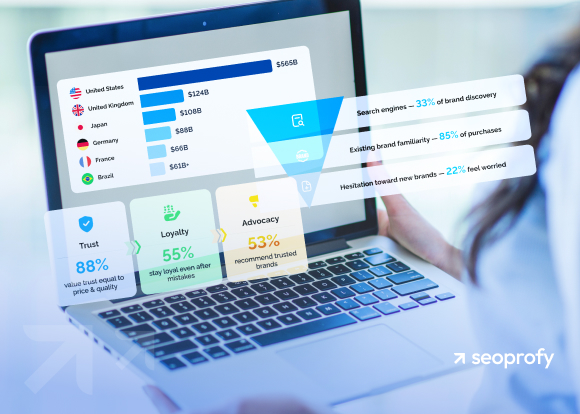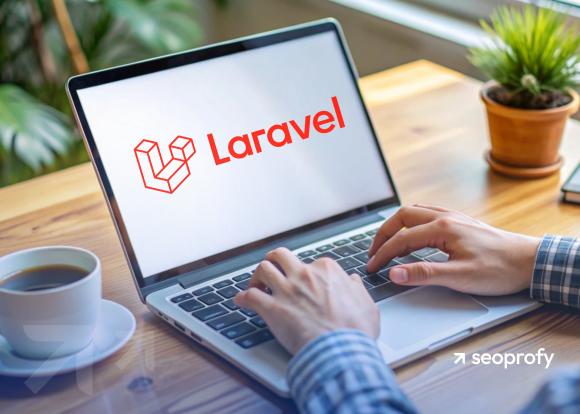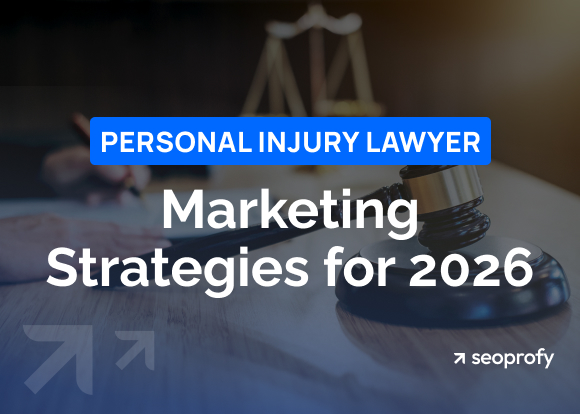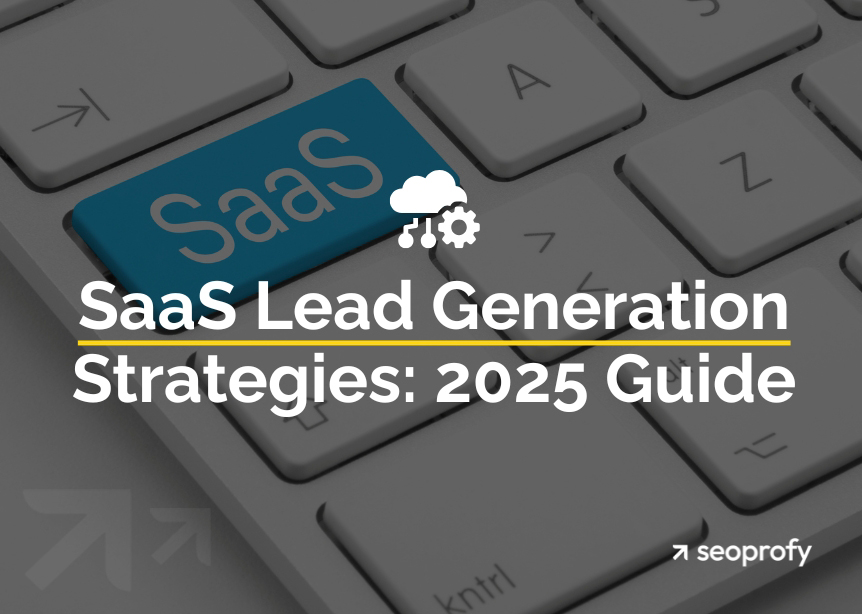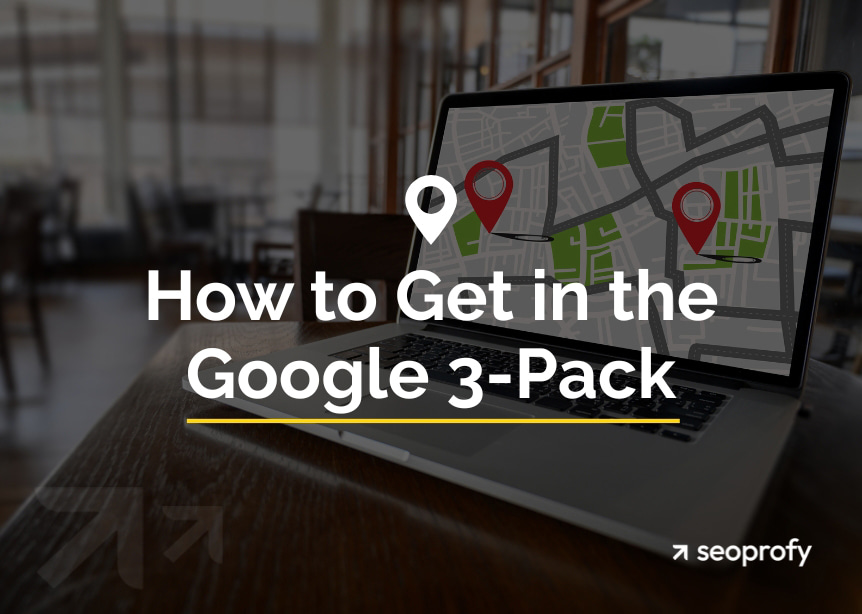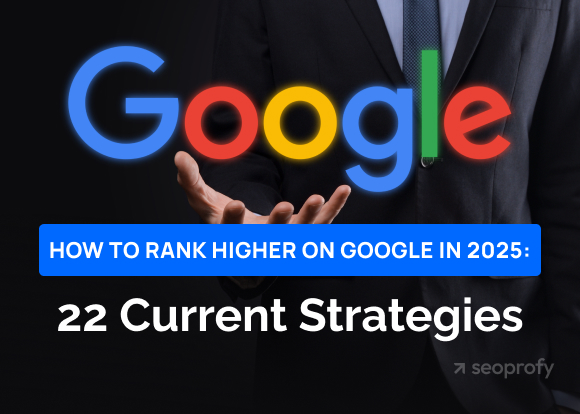In online marketing, companies often hear terms such as SEO vs SEA. Both can help you reach more people, but in principle, they work differently and have their own advantages.
The main difference between SEO and SEA is that SEO builds organic visibility over time, while SEA delivers quick, targeted results through paid ads. In this article, we’ll look at the benefits and use cases of SEA vs. SEO so you can decide which one—or maybe a mix of both—is best for your business.
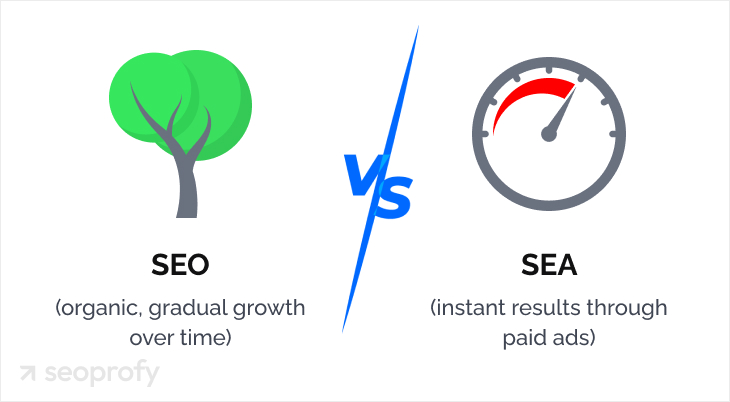
- SEO grows your visibility gradually and helps you get a constant flow of visitors without paying for each click.
- SEA gets traffic fast, which is great for short-term campaigns and quick promotions.
- With SEA, you can control who sees your ads and drive more targeted traffic.
- SEO builds trust with your audience through quality content and valuable links, which also improves your rankings.
- Together, SEA and SEO will let you reach a wider audience and give you better value for money.
What Is SEO (Search Engine Optimization)?
SEO is the practice of optimizing a website to help it rank higher in search engine results. When people search for something related to your business on Google or other search engines, SEO increases the chance that they’ll find your website in the organic, unpaid search results.
The Role of SEO in Driving Organic Traffic
SEO statistics suggest that 59% of users go to Google every day to find information about businesses. And the goal of SEO is to help those people find your website without paying for ads. Done right, it can drive valuable, lasting traffic and connect you with people actively looking for:
- Your products
- Your services
- Your expertise
When your business shows up at the top of search engine results, it tells people you’re credible and reliable. Let’s be honest—most of us trust organic results way more than ads because they just feel more real. That kind of trust is what helps you connect with customers, build relationships, and grow your revenue.
How Does SEO Work?
Search engines like Google use certain algorithms to decide which pages show up first in search results. These algorithms are constantly evolving and look at many factors, like how relevant and helpful your content is and how easy it is to use your site.
SEO covers all of these areas. It improves your website’s structure, keyword usage, content strategy, and technical setup. The goal is to make your website more relevant to what people are searching for so that search engines can easily understand and rank it higher.
Key Components of SEO
Search engine optimization has many moving parts, but the main three are on-page, off-page, and technical SEO:
- On-page SEO involves optimizing your site’s content and structure. Keyword research, content writing, internal linking, and adding main search terms to HTML tags (meta title and meta description) and URLs are the tactics used in this process.
- Off-page SEO mainly focuses on actions outside of your side like getting other authoritative websites to link to you. Backlinks are one of the main ranking factors and signal to Google that the content on your site is relevant and trustworthy. This helps to strengthen your authority and improve positions in search results.
- Technical SEO makes sure your site performs well on the web and mobile. Some tactics that go into that are SSL for secure browsing, quick page load times, and easy navigation on mobile. Structured data (schema markup) also helps enhance your visibility through “rich snippets” and provides more information to people in organic search results.
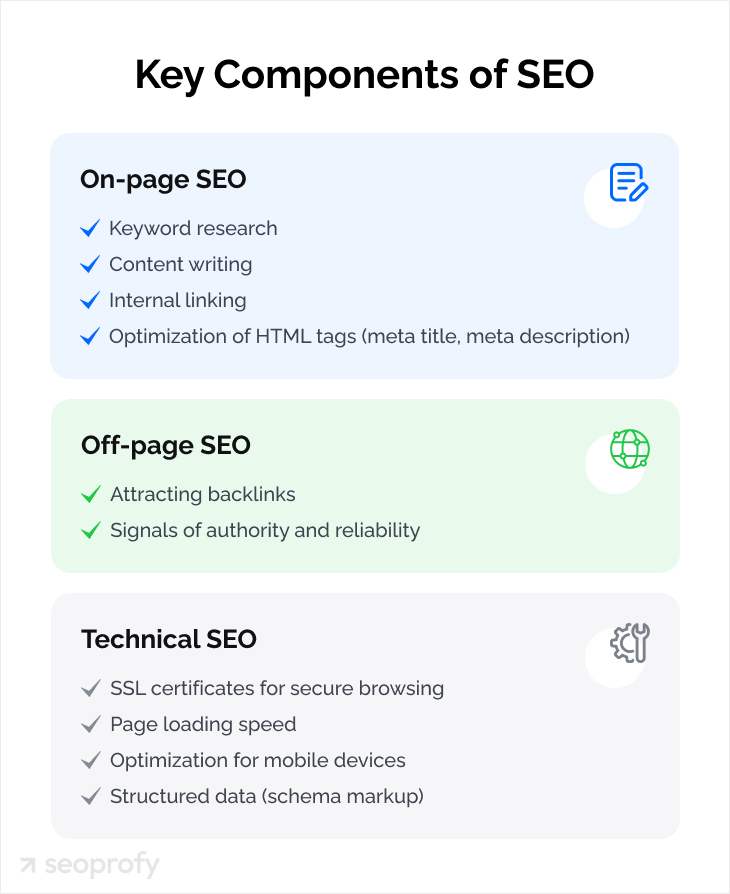
What Is SEA (Search Engine Advertising)?
SEA, or Search Engine Advertising, is a part of online marketing and helps your site get seen at the top of search results by paying for ads. Unlike SEO, which builds up your ranking gradually, SEA gives you quick visibility by letting you bid on keywords.
When people search for these search terms, your paid advertisements can appear, bringing traffic to your site almost right away. How well SEA performs depends on your budget and the number of terms you target. A bigger budget usually means more clicks.
How Does SEA Work?
With SEA, you pick keywords that match what your customers are searching for. Search engines, like Google, then place your ads at the top based on your bid amount and ad relevance.
Each time someone clicks your ad, you pay a fee, known as “cost per click” (CPC). This approach lets you pay directly for each visit and quickly brings people to your site who are interested in your product or services.
Key Components of SEA
Search Engine Advertising includes several important parts. These are the following:
Types of Search Engine Ads
SEA uses a variety of ad formats like text ads, display ads, shopping ads, and local service ads:
- Text ads are simple ads with a headline, description, and link to your site. They are most often placed at the top of the search results page.
- Display ads are image-based ads that appear on websites within the search engine’s ad network.
- Shopping ads show product images, prices, and merchant names. Ecommerce businesses often use this type of advertising.
- Local service ads appear at the top of search results for location-based queries, like “divorce attorney near me.” Ratings, location, and contact information are included so local customers can easily get in touch with them.
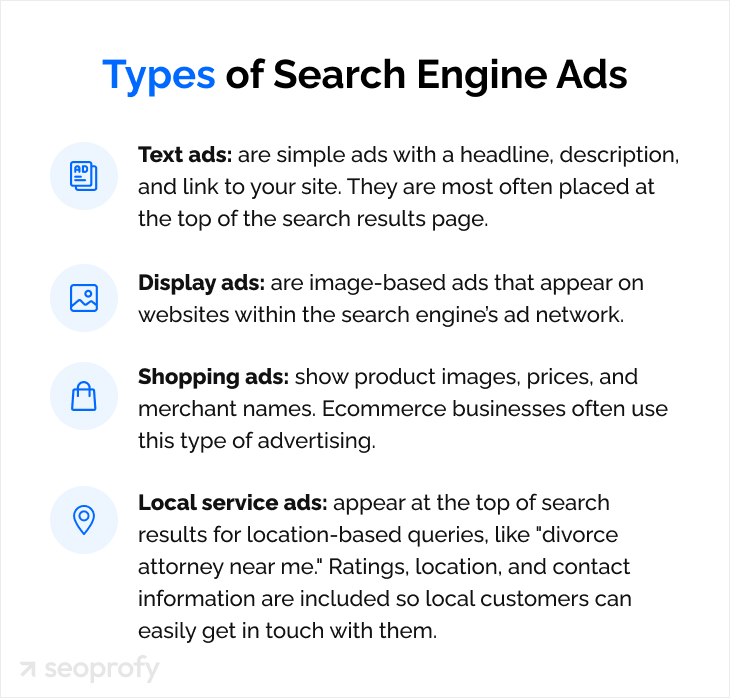
Campaign Setup and Targeting
One of the main perks of SEA campaigns is that they allow you to target specific keywords and reach groups of people based on their interests, search habits, and location:
- Audience targeting: Choose what audience you want to reach, such as their age, gender, income level, occupation, etc.
- Keyword targeting: Select keywords with good search volume and commercial intent.
- Geographic targeting: Connect with people in certain regions, cities, or countries.
Cost-Per-Click (CPC) and Ad Budgets
SEA works on a pay-per-click model. This means you pay each time someone clicks on your ad:
- Bidding strategies can be manual or automated. In the manual, you will set your own bid for each keyword within the campaign. In automated bids, the algorithms automatically adjust your bid to reach your goals, such as getting more clicks or conversions.
- Budget allocation helps you set daily or monthly limits for your ad spend. This keeps your campaigns within budget and lets you plan your spending wisely.
Ad Performance Tracking
To see if your efforts are paying off, you need to track your ad’s performance. This is when you look for the Key Performance Indicators (KPIs) you’ve set for your SEA campaign:
- Click-through rate (CTR) tells you how often people click on your ad after seeing it. To increase CTR, you can add your unique selling points to the copy text to make it more appealing.
- Conversion tracking shows what actions users take after clicking, like purchases or sign-ups. You can use Google Analytics 4 to track conversions and other key metrics, but you’ll first need to link your Google Ads account to GA4 and set up the events.
Key Differences Between SEO and SEA
The approach, timing, and goals of SEA and SEO are different. Here’s a breakdown of how they compare:
Organic vs. Paid Search
SEO (Search Engine Optimization) increases your site’s ranking in the organic search results (unpaid) by optimizing content and site structure. These appear after the paid results, and sometimes they are not even visible without scrolling. Here’s what it looks like:

SEA (Search Engine Advertising) relies on paid ads that appear at the top of SERP when people look up specific keywords. These provide a faster route to visibility since they show up before the search results.
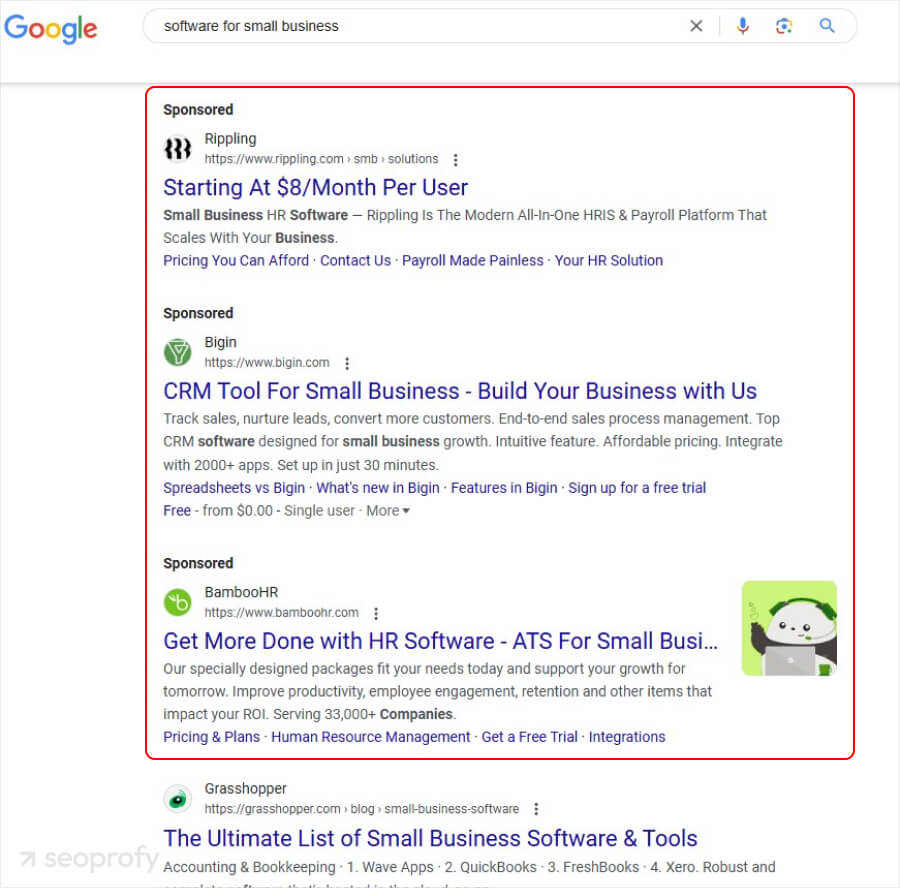
Short-Term vs. Long-Term Impact
SEA is ideal for short-term goals. As soon as you start running ads, your site appears high in paid search results and generates traffic almost immediately. However, the con of this approach is that once the Google ads stop running, your visibility will also drop.
In contrast, SEO takes more time for the initial setup but leads to lasting benefits. Once your site ranks well organically, you get long-term online visibility and keep attracting traffic over time.
Cost Comparison
SEO requires an upfront investment. You’d need to populate your site with relevant content, build high-quality backlinks, and fix technical issues—all of which come at a cost. But after your website is optimized, the organic clicks and traffic you get are basically free.
With SEA, you pay each time someone clicks on your ad. That being said, it can “cost you an arm and a leg” to sustain the same level of traffic over time.
Scalability and Flexibility
SEA gives you control over your budget, target audience, and ad settings. You can adjust campaigns quickly to meet immediate needs. This makes SEA flexible for short-term goals.
SEO grows steadily and builds reliable, long-term traffic. As you put more effort into SEO—like targeting new keywords, adding more high-quality content, or earning more backlinks—your site’s reach grows, too.
Benefits of SEO
SEO offers powerful advantages for businesses aiming to boost their online presence. For example, SEO for small businesses provides an accessible path to build a strong digital presence without hefty ad spend, driving sustainable growth. Let’s see some advantages:
Long-term Traffic Growth
SEO helps build sustainable traffic through improved organic rankings. As your site ranks higher in search results, you attract a steady stream of visitors without recurring advertising costs, contributing to consistent growth.
Cost-Effectiveness Over Time
While SEO requires an initial investment, it’s cost-effective in the long run. As your site’s organic traffic grows, the return on investment (ROI) increases, reducing reliance on ads and generating more value over time.
Brand Credibility and Trust
By appearing in search results, your brand gains credibility and trust with audiences. Users often perceive top-ranking organic results as more reputable, strengthening your brand’s reputation and making it a preferred choice over competitors.
Better User Experience
Faster loading times, easier navigation, and relevant content keep visitors engaged and reduce bounce rates. When people can quickly find what they’re looking for and enjoy the experience, they’re more likely to stay longer and make a sale.
Our award-winning SEO agency crafts personalized, data-driven strategies so you reap the full benefits of organic search. From uncovering the right keywords to earning quality backlinks, we apply proven methods that help you:
- Attract more traffic
- Get more leads
- Increase sales

Benefits of SEA
There are a lot of good reasons why businesses like SEA. These include:
Immediate Results
SEA provides instant visibility and traffic by placing your ads at the top of search results. Unlike SEO, which requires time to build rankings, SEA strategy drives immediate engagement, making it ideal for promotions and time-sensitive campaigns.
Quick Testing of Keywords and Messages
SEA allows businesses to quickly test different keywords, ad copies, and calls-to-action (CTAs). This capability helps identify the most effective messaging and strategies in a shorter time compared to SEO.
Flexible Scheduling
SEA campaigns can be set to run at specific times, allowing businesses to align ads with promotions, holidays, or peak hours. This scheduling flexibility enhances the effectiveness of campaigns by reaching audiences at the most opportune moments.
Full Control Over Budget
SEA offers businesses flexibility when it comes to advertising spend. Whether scaling up during peak seasons or pulling back as needed, companies can efficiently manage their budgets, ensuring they maximize ROI for each campaign.
Precise Targeting
With SEA, businesses gain precise control over targeting based on demographics, location, and user intent. This level of customization enables companies to reach their ideal audience effectively, improving ad relevance and engagement rates while reducing wasted ad spend.
Better Brand Awareness
Even when users don’t click on an ad, seeing it at the top of search results can increase brand awareness. With consistent visibility, SEA helps create familiarity with your brand, which can make users more likely to engage in the future.
SEO vs SEA: Choosing the Right Strategy
Both SEO & SEA have their strengths. Let’s look at when each approach works best and how they fit different needs in your marketing plan:
When to Use SEO
SEO is great for long-term growth. It helps you create a content strategy that improves your site’s organic rankings over time and builds brand awareness. If your goal is steady website traffic and a trusted brand presence, SEO is a good fit.
When to Use SEA
Google Ads work best for new websites, as they can quickly deliver more online visibility even without an established domain authority. They’re also great for promoting limited-time offers, such as events and new product launches, or when you have immediate traffic needs.
Combined Approach
SEA and SEO form an unbeatable duo in your digital marketing strategy. When you run ads, you can test which keywords exactly drive the most clicks and conversions. You can then focus on these search terms in your SEO strategy. Also, ads can complement your organic listings to help you cast a wider net and see better performance.
How to Optimize SEA Campaigns
Optimizing your campaigns helps you make the most of your spending and increase conversions. Here’s what to work on:
Improve Ad Quality Score
Your quality score is a rating that Google assigns to your ads based on relevance and user experience. You can find out what your rating is when you have an active campaign in the Google Ads account (formerly Google Adwords).
A higher score generally means you’ll pay less per click, so raising it can save you money. Here’s how to optimize it:
- Keyword match: Match the copy of your ad text closely with the keywords you’re targeting. The closer the match, the better Google rates your ads. If you notice that an ad group has a mix of keywords that don’t fit well under one ad, split it into smaller, more focused groups.
- Landing page relevance: Link your ads to a landing page that directly relates to the ad’s message. Clear and relevant landing pages keep users engaged and signal to Google that your ad is helpful.
- User experience: A fast-loading, easy-to-navigate site provides a better experience, which helps your Quality Score.
Conversion Rate Optimization (CRO)
Getting people to click on your ad in search engines is just the first step. CRO helps to turn those clicks into actions like purchases and sign-ups.
For this, make sure your CTAs are easy to find and, at the same time, direct your users on what to do next. Also, compress images and avoid unnecessary elements to keep pages loading fast.
A/B Testing in SEA
You can A/B test variations of your headlines, ad text, images, or CTAs to find out which works best for your ad. The more frequently you do this, the more your ads will improve, and the better return on investment you’ll get from your search engine marketing.
SEO vs. SEA: Which Is Better for Your Business?
The help you decide, you can consider the following:
Your Business Goals
First, think about your objective. If you want to receive long-term and consistent traffic, then SEO may be the route to take. Similarly, if you plan to target multiple countries and languages, an international SEO strategy could be the right choice. But if you’re looking for immediate results, advertising can help drive traffic straightaway.
Budget Considerations
Budget is another factor. As we already mentioned, SEO requires an upfront investment of time and effort. It’s a good fit if you’re willing to wait for growth that lasts. But if you’re working with a limited budget and need visibility fast, then it’s better to go with SEA.
Long-term vs. Short-term Strategies
SEO is best as a long-term strategy and helps you build a strong presence in search engines. While it takes longer to see the outcomes, those results tend to stick. SEA is a wiser choice when you need short-term impact—perfect for grabbing attention of your potential customers quickly.
Bottom Line
It’s clear now that both SEO and SEA campaigns have their strengths, and combining them can give you a competitive advantage. Using Google Ads within an SEO strategy lets you quickly test keywords and find what works before fully committing to optimization efforts.
On that note, if you need any expert help with SEO or SEA, we’re always here to help! At SeoProfy, we build custom strategies based on real data, not guesswork. Whether you’re after quick results with SEA, steady growth with SEO, or a mix of both, we can help you create a strategy that works for you.



